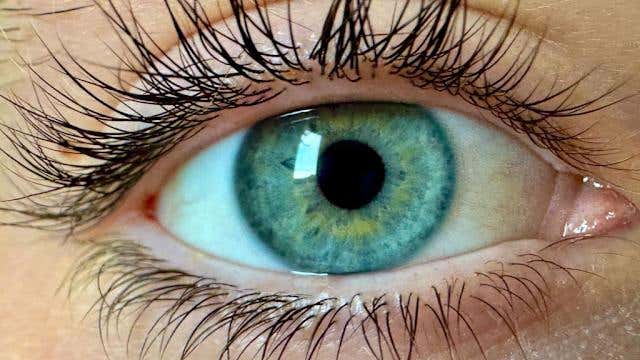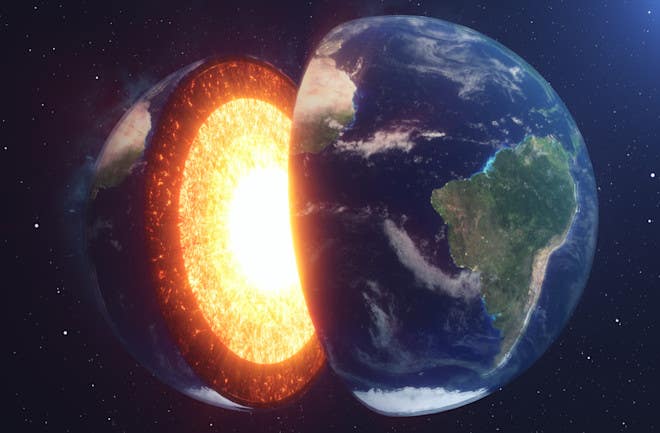Seeding the sky with diamonds could cool the Earth, study finds
Scientists across the world agree: unless greenhouse gas emissions fall to net zero, the effects of climate change will grow more severe and more permanent.

Scientists modeled how diamond dust might cool Earth by reflecting sunlight. (CREDIT: SHEHROZ10 / PNGTree)
Global warming continues to surge, driven by rising greenhouse gas emissions. Scientists across the world agree: unless these emissions fall to net zero, the effects of climate change will grow more severe and more permanent. But as temperatures rise and emissions reductions lag, researchers are exploring backup plans—some that sound more like science fiction than science.
One of the most radical ideas involves spraying tiny particles into the sky to reflect sunlight and cool the Earth. This method is known as solar geoengineering or stratospheric aerosol injection (SAI). While the concept dates back decades, new studies are pushing the limits of what might be possible—like cooling the planet with five million tons of synthetic diamond dust every year.
Exploring Alternatives to Greenhouse Gas Reductions
The idea behind SAI is simple: mimic what happens during major volcanic eruptions. When Mount Pinatubo erupted in 1991, it blasted 20 million tons of sulfur dioxide into the stratosphere. That gas formed particles that reflected sunlight and cooled the planet by about half a degree Celsius for two years. Scientists took note. Maybe it was possible to recreate that effect intentionally, using high-flying aircraft to release reflective aerosols high above Earth.
But sulfur dioxide has serious downsides. It turns into sulfuric acid, which damages the ozone layer and leads to acid rain. It can also warm the stratosphere, shifting wind patterns, changing rainfall, and even disrupting the jet stream. These side effects could worsen global weather systems, rather than stabilize them.
Searching for Safer Particles
To avoid these risks, researchers are investigating alternatives. A recent study, published in the journal Geophysical Research Letters, led by climate scientist Sandro Vattioni at ETH Zurich tested seven different materials to see which one could cool the planet most effectively with the fewest side effects. The researchers used a supercomputer to model how each compound—sulfur dioxide, aluminum oxide, calcite, silicon carbide, anatase, rutile, and diamond—would behave in the stratosphere over 45 years.
Diamond dust came out on top.
Tiny carbon-based particles were the best at reflecting sunlight while staying suspended in the air long enough to make a difference. They didn’t clump together, didn’t absorb much heat, and didn’t react with other chemicals in the atmosphere. That meant no acid rain, no ozone destruction, and no warming in the upper layers of the atmosphere. In fact, the models suggested that a global temperature drop of 1.6°C (2.9°F) could be achieved with annual injections of five million tons of diamond dust.
Related Stories
“We were able to show that diamond dust would be particularly suitable for solar geoengineering,” Vattioni explained. “It reflects sunlight the most and mitigates some of the negative environmental impacts that would result from injecting sulfur dioxide.”
The High Cost of a Sparkling Sky
This dazzling solution comes at a steep cost. ETH Zurich scientists estimate it would require an annual investment of $2.6 trillion—adding up to more than $200 trillion through the end of the century. At about $500,000 per ton, synthetic diamond is 2,400 times more expensive than sulfur.
That doesn’t even include the cost of building a global fleet of high-altitude aircraft to inject the dust into the stratosphere. And even if the funding appeared overnight, it’s unclear whether diamond manufacturers could scale production fast enough to meet the demand.
Douglas MacMartin, a climate engineer at Cornell University, remains skeptical. “Synthetic diamond dust is 2,400 times more expensive than sulfur, which is why I advocate for sulfur as a more cost-effective alternative,” he said in an interview with Science.org.
A Closer Look at Microphysics
Even with the perfect material, effectiveness depends on more than just reflectivity. Particle behavior in the atmosphere—how they move, settle, and clump—plays a major role. Past studies failed to fully account for how particles interact with air currents, moisture, and sunlight over time.
That’s where recent work by Vattioni and his team made a breakthrough. They used a fully interactive aerosol-chemistry-climate model to simulate how materials like alumina and calcite would behave. They found that heavier particles, even if more reflective, tend to settle faster due to gravity, which limits how long they stay in the stratosphere. Clumping—known as agglomeration—also affects how well the particles scatter sunlight. Larger clusters reflect less energy back into space.
The study showed that to achieve the same cooling as sulfur-based aerosols, much higher mass injection rates would be needed for solid particles like alumina or calcite. That’s because sulfur dioxide transforms into aerosols in the atmosphere, meaning much of the heavy lifting happens naturally. With solids, everything has to be lifted and maintained by human technology.
Still, there was good news: both diamond and calcite particles performed better than expected. Calcite, which makes up common limestone and is found all over the world, showed almost as much promise as diamond dust—at a fraction of the cost.
A Risky Plan B
Despite its scientific potential, solar geoengineering is not a silver bullet. Even the researchers who promote it acknowledge its risks.
“Solar geoengineering will not solve the problem of climate change,” Vattioni emphasized. “The only sustainable solution remains the rapid reduction of global greenhouse gas emissions and the implementation of removal technologies.”
In other words, this technology might buy time, but it cannot replace cutting carbon emissions.
Critics warn that launching particles into the sky without knowing the full consequences could backfire. Changes in wind patterns and precipitation could damage crops or disrupt ecosystems. And once aerosols are up there, it would be nearly impossible to reverse the effects if things go wrong.
Ethical questions also linger. Who decides when and where to deploy these technologies? What if one country wants to move forward while another objects? And what happens if SAI is used as a substitute for real climate action, delaying the hard work of cutting fossil fuel use?
“There is still significant uncertainty,” Vattioni said. “More research is needed before we can even consider a possible application.”
What the Future Holds
Climate change is already pushing Earth’s systems to the brink. And as progress toward emission reductions stalls, the idea of controlling sunlight to cool the planet may become more tempting.
That’s why scientists continue to test, model, and explore even the wildest-sounding ideas. “Not researching this technology would also be a risk,” Vattioni argued. “It would mean ignoring a tool that could help reduce some of the worst climate impacts.”
Whether or not diamond dust ever fills the skies, one thing is clear: addressing climate change requires action, innovation, and caution in equal measure. The science may shine, but the solution remains grounded—cutting greenhouse gases at the source.
Note: The article above provided above by The Brighter Side of News.
Like these kind of feel good stories? Get The Brighter Side of News' newsletter.
Joshua Shavit
Science & Technology Writer | AI and Robotics Reporter
Joshua Shavit is a Los Angeles-based science and technology writer with a passion for exploring the breakthroughs shaping the future. As a contributor to The Brighter Side of News, he focuses on positive and transformative advancements in AI, technology, physics, engineering, robotics and space science. Joshua is currently working towards a Bachelor of Science in Business Administration at the University of California, Berkeley. He combines his academic background with a talent for storytelling, making complex scientific discoveries engaging and accessible. His work highlights the innovators behind the ideas, bringing readers closer to the people driving progress.



